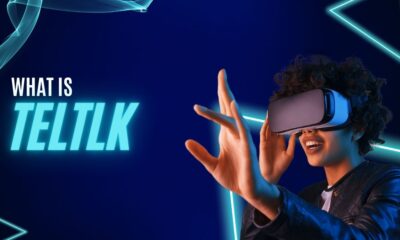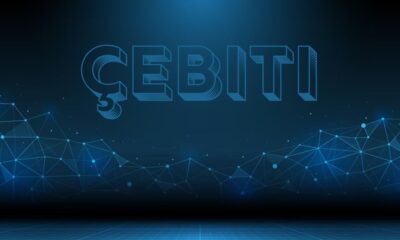Education
The Ongoing Influence of Brown vs. Board of Education

The Historical Verdict and Its Immediate Consequences
The unanimous Supreme Court decision on Brown vs Board of Education declared that state-sponsored segregation of public schools was a violation of the 14th Amendment and was, therefore, unconstitutional. It overturned the Plessy v. Ferguson ruling that had established ‘separate but equal’ education, recognizing that separation, in reality, generated a feeling of inferiority among African-American children and was damaging to their development. Consequently, the federal government assumed an active role in the civil rights movement, providing legal and legislative support to dismantle the structures of segregation and advance the case for equality.
Educational Reforms Post-Brown vs. Board: A Timeline of Change
Triggered by the Brown ruling, the following years saw a series of reforms and policies to integrate schools. The Civil Rights Act of 1964 and the Elementary and Secondary Education Act of 1965 are notable examples of attempts to address funding inequalities and discrimination in schools. However, the path to educational equity was strewn with obstacles, including resistance from segregationists and uneven enforcement of laws. These reforms set a precedent, but the journey to integration proved more arduous than anticipated, as profoundly ingrained societal biases required more than just legal solutions.
The Role of Judicial Review in Upholding Equality
Judicial review has played a crucial role in the ongoing effort to ensure that the ideals of the Brown decision are upheld. It has been leveraged to strike down initiatives that have either directly or indirectly perpetuated segregation, keeping the spirit of the ruling alive. While Brown was central in setting the stage, it has required continual oversight and initiative from the courts to maintain the trajectory towards educational equality, demonstrating the judiciary’s critical role in civil rights progress.
Modern-Day Segregation: A New Face of an Old Issue
Six decades after Brown, racial and economic divides continue to shape the educational landscape, a phenomenon sometimes referred to as de facto segregation. While legally mandated segregation is no longer present, patterns of residential living, economic disparity, and localized school funding can lead to segregated schooling experiences. The implications of these new segregation patterns are extensive and suggest that achieving the full intent of the Brown decision is a work in progress, necessitating a multifaceted approach to address the complexities of modern segregation.
The Psychological Impact of Segregation and Integration
The prospect of integrated schools due to Brown brought an optimistic vision of a more inclusive society. Research has shown that segregated schools can exacerbate feelings of social exclusion among students of color and can negatively impact their educational attainment and long-term psychological health. Conversely, integrated schools have demonstrated positive outcomes, such as increased academic performance and greater intergroup relations, bolstering the case for more inclusive educational environments. These psychological considerations must continue to be considered when devising educational policies.
Equal Education in the 21st Century: Are We There Yet?
Assessing the current state of educational equality reveals a complex picture. Racial and socioeconomic achievement gaps continue, and frequent disparities in access to advanced coursework and extracurricular activities remain. Ongoing debates about school funding, standardized testing, and the school-to-prison pipeline indicate that the dream of equal educational opportunity for all students still needs to be fulfilled, requiring persistent efforts to tackle systemic issues within educational institutions.
The Influence of Brown vs. Board Beyond the Classroom
The Brown ruling had far-reaching consequences beyond educational settings. It laid a legal groundwork that inspired other civil rights advances in housing, voting rights, and employment. Importantly, it set a precedent that the federal government could and should play a pivotal role in addressing systemic discrimination and promoting a more inclusive and equitable society.
Perspectives on Racial Equality in Education Today
The dialogue surrounding racial equality in education today is as vibrant and varied as ever. Educators, civil rights activists, and communities continue to weigh in, reflecting on the progress and road ahead. These dialogues often highlight the need for ongoing review and reform of educational policies to ensure that the intents of landmark rulings like Brown continue to manifest in tangible improvement for students of all backgrounds.
The Role of Policy and Advocacy in Furthering Desegregation Goals
The work of nonprofit organizations, advocacy groups, and civil society movements is vital to advancing equality in education. These movements address inequities by pushing for reforms, raising awareness, and directly supporting affected communities. Their commitment underscores the critical premise that, while landmark court decisions are crucial, societal progress typically necessitates a sustained effort from a broad coalition of stakeholders.
Looking Ahead: The Future of Education and Racial Equality
The journey toward fully realizing Brown’s educational equality is ongoing and evolutionary. Continued dialogues, policy reforms, and a societal commitment to inclusivity and equity will likely shape the future. Genuine progress will depend on a collective dedication to addressing the vestiges of past inequalities and the contemporary challenges that permeate the educational system.
Education
Advancing Education: The Impact of Online Masters in Education Programs on Teacher Professional Development

Online Masters in Education programs have revolutionized teacher professional development, offering flexible, innovative, and rigorous curricula tailored to educators’ needs. These programs enhance teaching skills, incorporate modern pedagogical approaches, and empower teachers to drive positive change in educational settings, ultimately elevating the quality of education.
Introduction
The educational sphere is witnessing a transformative era where the fusion of knowledge and technology reshapes the teaching profession. Embracing online mediums such as the esteemed online Masters in Education programs heralds a new chapter in teacher professional development. These platforms are not just about acquiring higher qualifications; they represent the convergence of progress, adaptability, and innovation that modern-day educators need to thrive in their vocations. Ensuring that teachers possess the latest pedagogical strategies is essential for the future of Education, making these programs an invaluable asset.
The Evolution of Teacher Education
For decades, the road to advanced Education for teachers was a monolithic one, confined within the walls of universities and constrained by rigid schedules. In contrast, the present-day scenario presents a vibrant canvas of options – with online Education being the centerpiece. These virtual classrooms tear down the physical walls, offering diverse modules and specialized courses. Not only have they broadened access to top-tier Education, but they have also empowered teachers across the globe to enhance their craft without stepping aside from their essential roles in Education.
Online Masters in Education: A Closer Look
Scrutinizing online Masters in Education reveals a bespoke educational experience designed for a digitized learning environment. Most programs offer a comprehensive suite of modules—from advanced classroom management techniques to inclusive education practices and leadership development. The sheer adaptability of online programs helps educators manage their professional commitments while pursuing higher Education, leading to better-rounded teaching professionals equipped with contemporary skills and insights.
Benefits of an Online Master in Education for Professional Development
The pursuit of an online Master’s in Education embodies a multitude of benefits for educators. Such programs give teachers the tools to revitalize their teaching approaches, engage students more effectively, and deliver improved educational outcomes. Educators can also delve into specializations like Special Education or STEM, fostering further expertise in areas critical to the future of learning. Notably, the diverse cohort in these courses offers a rich tapestry of perspectives, enhancing the learning experience and encouraging a vibrant exchange of ideas.
Challenges and Considerations
Delving into the digital academia landscape requires navigating specific challenges. With the proliferation of online programs, discerning the reputable and credible ones from the rest is crucial. Candidates must also juggle personal commitments with the disciplined pursuit of online learning – a balancing act requiring high self-motivation and organization. Furthermore, technology access and digital literacy remain pertinent issues, reminding us that equitable access to online Education is still a work in progress.
The Role of Data and Research in Online Education
Online educational programs are no different in a world increasingly led by data. They hinge on applying evidence-based research, ensuring teaching strategies are grounded in verified results. Incorporating cutting-edge findings into course curricula allows practicing educators to employ scientifically sound and proven techniques to enhance learning. Integrating data analytics strategies also positions these programs at the cutting edge of educational advancements. Articles like the one on Edutopia delve into how online learning is supported by research, providing a glimpse into the meticulous crafting behind these programs.
Real-world Impact: Case Studies and Success Stories
The proof of impact, as they say, is in the pudding—or, in this case, in the real-world stories of educators who have transformed their careers through online master programs. These individual journeys illustrate the profound effects on teaching methodologies, personal growth, and student engagement. Noteworthy success stories spotlight the democratization of Education, showcasing how teachers from varied demographic backgrounds have leveraged these programs to attain new heights in their careers.
Future Outlook of Online Education in Teacher Professional Development
The digital revolution in Education is not transitory; it is an enduring trend that will shape the complexion of professional development for educators. With an ongoing surge in EdTech innovations, online Masters in Education programs are expected to become more immersive and interactive. They stand as a beacon of hope to address systemic issues like teacher shortages and disparities in educational access, illustrating the brilliant potential of online Education to foster professional growth universally.
Choosing the Right Program: A Guide for Educators
Navigating the array of online Masters in Education programs resembles navigating a complex maze, each path promising unique opportunities. The key is finding a program with a robust curriculum that resonates with individual career goals. This journey demands a meticulous examination of accreditation, faculty expertise, and alumni testimonials. A well-informed decision based on these factors guarantees a transformative educational journey transcending traditional boundaries.
Conclusion
The burgeoning presence of online Masters in Education programs is a testament to the ongoing evolution of the educational landscape. A nexus of convenience, quality, and innovation, these programs have become the quintessential vehicle for educator advancement, with the capacity to revolutionize learning experiences irrespective of the medium. For those who stand at the cusp of undertaking this educational journey, perspectives offered by reflective articles like those on Inside Higher Ed provide valuable insights into the dynamic world of online learning.
Education
The Power of Knowledge: Why You Should Be Reading BetterThisFacts

Welcome to a world where knowledge is power and information is at our fingertips. In the age of endless content, it’s essential to distinguish between what’s just noise and what truly enriches our minds. Enter BetterThisFacts – your go-to source for reliable, insightful, and engaging information on a wide array of topics. Let’s dive into why reading BetterThisFacts can empower you in ways you never imagined!
The Importance of Knowledge in the Modern World
In today’s fast-paced world, knowledge is more valuable than ever. It empowers us to make informed decisions and navigate the complexities of our environment. With the constant influx of information available at our fingertips, being able to discern credible sources like BetterThisFacts is crucial.
Knowledge fuels innovation and progress, shaping industries and driving societal change. It opens doors to new opportunities and expands our horizons beyond imagination. In a competitive global economy, staying informed gives us a competitive edge and enhances our critical thinking skills.
The pursuit of knowledge is not just about accumulating facts but understanding their implications. It enables us to see the bigger picture, connect dots others may overlook, and adapt to evolving circumstances with agility. Knowledge truly is power in today’s interconnected world where insights are key to success.
How BetterThisFacts Provides Quality Information
BetterThisFacts is your go-to source for reliable and top-notch information. With a team of dedicated researchers and writers, this platform ensures that every piece of content is thoroughly researched and fact-checked before being published.
The quality of the information provided on BetterThisFacts sets it apart from other sources. You can trust that the data you find here is accurate, up-to-date, and backed by credible sources. Whether you’re looking for insights on science, technology, health, or more, BetterThisFacts has got you covered.
Gone are the days of sifting through unreliable websites or questionable forums for information. BetterThisFacts delivers trustworthy content in an easily digestible format. From informative articles to engaging videos, this platform caters to diverse learning preferences.
Next time you have a burning question or want to expand your knowledge on a particular topic, turn to BetterThisFacts. You’ll be amazed at how much valuable information awaits you at your fingertips.
Diverse Range of Topics Covered on BetterThisFacts
BetterThisFacts boasts a diverse range of topics that cater to every curious mind out there. From science and technology to history and pop culture, this platform covers it all. Whether you’re interested in learning about the latest scientific discoveries or diving into ancient civilizations, BetterThisFacts has something for everyone.
You can explore articles on space exploration one day and switch gears to read about mindfulness techniques the next. The variety of subjects ensures that you’ll never run out of fascinating content to devour. With each topic expertly researched and presented in an engaging manner, you’ll find yourself easily getting lost in the wealth of information available.
From debunking myths to shedding light on little-known facts, BetterThisFacts keeps readers informed and entertained simultaneously. It’s like having a virtual encyclopedia at your fingertips, ready to expand your knowledge with just a click. So whether you’re a lifelong learner or simply enjoy exploring new ideas, BetterThisFacts is the perfect destination for satisfying your thirst for knowledge.
Engaging Formats and Creative Content
When it comes to engaging formats and creative content, BetterThisFacts truly stands out from the crowd. With a variety of multimedia elements such as videos, infographics, and interactive quizzes, the platform ensures that learning is not only informative but also enjoyable.
The team behind BetterThisFacts understands that creativity plays a crucial role in capturing the audience’s attention. By presenting information in visually appealing ways and incorporating storytelling techniques, they make complex topics easy to understand and retain.
Whether you prefer watching short videos or reading thought-provoking articles, BetterThisFacts has something for everyone. The diverse range of content formats keeps users coming back for more, eager to expand their knowledge in fun and innovative ways.
By combining engaging formats with creative content, BetterThisFacts creates an immersive learning experience that leaves a lasting impression on its audience.
Real-Life Applications of Information from BetterThisFacts
Have you ever found yourself in a situation where a random piece of information you learned unexpectedly came in handy? BetterThisFacts is your go-to source for fascinating facts and knowledge that can actually be applied in real life scenarios.
Imagine impressing your friends with quirky facts about the universe or history during casual conversations. This could lead to interesting discussions and even spark new interests among your social circle.
Learning practical tips on health, productivity, or finance from BetterThisFacts can directly impact your daily routines and improve your quality of life. From simple life hacks to more complex strategies, the information provided can help you make better decisions and achieve personal growth.
By absorbing diverse knowledge from BetterThisFacts, you equip yourself with valuable insights that may come in handy when faced with challenges at work or in relationships. Keep exploring this treasure trove of information and watch how it enhances various aspects of your life!
How to Incorporate More Reading into Your Daily Routine
Looking to boost your knowledge and expand your horizons? Incorporating more reading into your daily routine is a great way to achieve that goal. Start by setting aside dedicated time each day for reading, whether it’s in the morning with a cup of coffee or before bed to unwind.
Choose books, articles, or blogs that interest you and align with your goals. This will make the process more enjoyable and keep you motivated. Consider carrying a book or e-reader with you wherever you go so you can sneak in some reading during idle moments like waiting in line or on public transportation.
Joining a book club or online reading community can also provide accountability and motivation to keep up with your reading goals. Make use of technology by listening to audiobooks during commutes or while doing household chores for multitasking efficiency.
Remember, the key is consistency – even just 15-30 minutes of reading each day can make a significant difference over time. So grab that book, find a cozy nook, and dive into the world of words!
Conclusion
In a world where knowledge is power, BetterThisFacts stands out as a valuable resource for those seeking to expand their understanding of the world around them. By providing quality information in engaging formats across a diverse range of topics, this platform offers readers the opportunity to learn something new every day.
Incorporating more reading into your daily routine not only enhances your knowledge but also sharpens your critical thinking skills and broadens your perspective. Whether you’re interested in science, history, technology, or any other subject, BetterThisFacts has something to offer for everyone.
So why wait? Start exploring the wealth of information available on BetterThisFacts today and unlock the power of knowledge that can transform your life. Happy reading!
Education
Gimkit: The Fun and Interactive Study Tool Your Students Will Love

Looking to inject some excitement into your classroom? Meet Gimkit – the ultimate study tool that turns learning into a fun and interactive game! Say goodbye to boring lectures and hello to engaging quizzes that will have your students begging for more. In this blog post, we’ll dive into what makes Gimkit so special, how you can use it in your lesson plans, and why it’s a game-changer for both educators and learners alike. Let’s level up your teaching with Gimkit!
What is Gimkit and How Does it Work?
Gimkit is a dynamic online quiz platform designed to make studying engaging and interactive for students of all ages. Unlike traditional study tools, Gimkit combines elements of gamification with customizable features to create an exciting learning experience.
At its core, Gimkit allows educators to create quizzes or “kits” that can be tailored to suit specific learning objectives. Students can join games using unique game codes and compete against their classmates in real-time. As they answer questions correctly, they earn virtual currency which they can use to purchase power-ups and bonuses.
One standout feature of Gimkit is the ability for students to strategize and adapt their gameplay based on their performance. With options for customization such as question types, timers, and point values, teachers have the flexibility to design challenges that cater to diverse learning styles.
The Benefits of Using Gimkit in the Classroom
Gimkit brings a whole new level of engagement to the classroom setting. With its interactive and game-like format, students are more motivated to participate actively in their learning. This tool not only makes studying fun but also increases retention rates as students are eager to win points and rewards.
One significant benefit of using Gim-kit is its adaptability to different subjects and topics. Teachers can customize questions based on the specific content they want students to focus on, making it a versatile tool for various lesson plans. Additionally, Gim-kit allows for real-time assessment, enabling teachers to gauge student understanding instantly.
Moreover, Gimkit fosters collaboration among students as they work together or compete against each other in a friendly environment. This collaborative aspect promotes teamwork and helps build a sense of community within the classroom. Incorporating Gim-kit into teaching practices can revolutionize traditional learning methods by making them more dynamic and engaging for both educators and students alike.
How to Set Up and Customize Your Gimkit Game
Setting up and customizing your Gimkit game is a breeze! Start by logging into your account and creating a new game. You can choose from various question formats like multiple choice, true/false, or fill in the blank.
Next, personalize your game by adding images, gifs, or even memes to make learning more engaging for your students. You can also set timers for questions to keep the pace lively.
Don’t forget to adjust the settings to fit your lesson objectives. Whether you want individual play or team collaboration, Gimkit offers versatile options to cater to different teaching styles.
Once you’re satisfied with the setup, save your game and share it with your class via a unique code or link. Get ready to watch your students dive into interactive learning like never before!
Tips for Incorporating Gimkit into Lesson Plans
Looking to spice up your lesson plans with a fun and interactive twist? Gimkit is here to save the day! Incorporating this engaging study tool into your classroom routine can bring a whole new level of excitement to learning.
To seamlessly integrate Gimkit into your lessons, start by customizing games based on the topics you’re teaching. Whether it’s vocabulary, math problems, or history facts, tailor the game to match your curriculum.
Encourage friendly competition among students by dividing them into teams or allowing individual play. This not only makes learning enjoyable but also fosters collaboration and critical thinking skills.
Utilize features like power-ups and bonuses strategically throughout the game to keep students engaged and motivated. These incentives add an element of surprise that keeps everyone on their toes.
Don’t forget to debrief after each session to review concepts covered during gameplay. This reflection time helps reinforce learning objectives in a fun and memorable way.
Real Life Examples of Gimkit Success Stories in the Classroom
Picture this: a classroom buzzing with excitement as students eagerly participate in a Gim-kit game. The once mundane study session has transformed into a riveting competition where knowledge is the key to success. Teachers witness firsthand how Gim-kit motivates students to engage actively in learning, sparking their curiosity and drive to excel.
In one particular class, a teacher noticed struggling students gaining confidence and improving their grades after incorporating Gimkit into their lessons. The interactive nature of the game not only reinforced concepts but also fostered friendly competition among peers.
Moreover, educators have shared stories of increased retention rates and student collaboration thanks to Gimkit’s unique approach to studying. Students are no longer passive recipients of information; they become active participants in their own learning journey.
These real-life examples demonstrate that Gimkit is more than just a study tool – it’s a catalyst for positive change in the classroom dynamic.
Alternative Study Tools and Why Gimkit Stands Out
Looking for alternative study tools to engage your students? While there are various options available, Gimkit stands out as a fun and interactive platform that adds an element of excitement to learning. Unlike traditional study tools, Gimkit incorporates game-like features that keep students motivated and eager to participate in the learning process.
With customizable settings and a user-friendly interface, Gimkit allows educators to tailor games to suit their specific lesson objectives. This flexibility sets it apart from other study tools by enabling teachers to create personalized learning experiences for their students. Additionally, the competitive nature of Gimkit motivates students to actively engage with the material and strive for success.
Moreover, Gimkit offers real-time feedback and assessment capabilities, allowing educators to track student progress effectively. This instant feedback loop promotes continuous improvement and helps identify areas where additional support may be needed. By incorporating elements of gamification into the studying process, Gimkit provides a dynamic approach that enhances student engagement and retention of information.
Conclusion
As we wrap up our exploration of Gimkit, it’s clear that this interactive study tool has the potential to revolutionize classroom learning. With its engaging features and customizable options, Gimkit offers a dynamic way for students to review material and test their knowledge in a fun and competitive environment.
By incorporating Gimkit into lesson plans, educators can enhance student engagement and motivation while also assessing comprehension in real-time. The success stories shared by teachers who have integrated Gimkit into their classrooms serve as testament to its effectiveness in boosting student participation and retention of information.
With alternative study tools available, what sets Gimkit apart is its gamified approach that keeps students actively involved in the learning process. The ability to tailor games to specific topics and track individual progress makes it a versatile tool for teachers across various subjects.
In the ever-evolving landscape of education technology, Gimkit stands out as a valuable resource for promoting active learning and fostering a collaborative classroom environment.
FAQs
1. What makes Gimkit different from other study tools?
Gimkit stands out due to its gamified approach, allowing students to engage in interactive learning while reinforcing key concepts through repetition and competition.
2. Can I track student progress and performance with Gimkit?
Yes, Gim-kit provides detailed reports on student activity, performance metrics, and areas for improvement, enabling teachers to monitor individual progress and tailor instruction accordingly.
3. How can I incorporate Gimkit into my lesson plans effectively?
By customizing games to align with learning objectives, integrating them as review activities or assessments, and providing incentives for participation, teachers can seamlessly integrate Gimkit into their teaching practices.
4. Is it possible to collaborate with colleagues on creating Gim-kit games?
Absolutely! Teachers can work together to develop collaborative game sets or share existing ones within the Gimkit community, fostering a supportive environment for resource sharing and creativity.
5. Are there any additional resources or support available for using Gimkit?
Gim-kit offers a range of tutorials, user guides, and customer support services to assist educators in maximizing the benefits of the platform and enhancing student engagement through innovative learning experiences.
-

 Entertainment5 months ago
Entertainment5 months agoUnveiling the World of HDToday
-

 Technology5 months ago
Technology5 months agoUnveiling the Wonders of Teltlk Technology
-

 Business5 months ago
Business5 months agoUnlocking Opportunities with GovDeals – Liquidity Services Marketplace
-

 Technology5 months ago
Technology5 months agoÇebiti: Corporate Operations with an Integrated AI Platform
-

 Business5 months ago
Business5 months agoThe Ultimate Guide to High Risk Merchant Services
-

 Health5 months ago
Health5 months agoIlluminate Your Scans: Unveiling the Magic of Luminous Scans in Modern Imaging
-

 Health4 months ago
Health4 months agoExploring the Benefits of wellhealthorganic Home Remedies
-

 Entertainment5 months ago
Entertainment5 months agoRecord of the Mightiest Lord Chapter 1: Unveiling the Epic Saga










